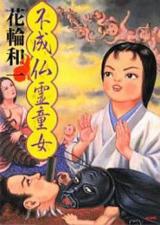Published in France as "La Fille Fantôme" (The Ghost Girl), it's a collection of short stories about ghosts, except the last one that deals with zombies. Not really an ero-guro piece since it has few, if any, erotism. it's much more a straight horror and mysticism book, with a strong accent on guilt and revenge.
There are six “ghost girl” episodes and four more stories, including the zombies one. The first two are kind of origin stories and the third one sets the tone for the rest: some bad characters torment an innocent one, which seeks revenge, that comes as a sorcery, or a curse, sometimes executed by a ghost. There's always a strong moral undercurrent. Trouble comes when, in the fifth and sixth story, the narrative justifies torture, and death penalty, as deserved punishment for some crimes, even if particularly grave ones like the killing of children. But it doesn't stop there because then comes the branding as hypocrites, and bad parents, of those that are against that idea. And so finishes the ghost girl cycle.
After three more stories, of supernatural punishment, of the gilty ones, comes the aforementioned “Zombies” short that's different in tone. Here Hanawa appears as character, first in prison and then out. The narrative shows an individual that dedicates himself to the creation of zombies, from the bodies of suicides, and their further commerce as slaves. Another character, starts by thinking about redeeming the souls of two of these poor zombies and finishes by exploiting them remorselessly, destroying one on the process. The remaining one, he sells it to the Hanawa character and is shown in the end, locked in a WC, drawing the pages of the book.
There's, finally, an illustrated text by Hanawa, where he writes about what a soul looks like, where it goes when it leaves the body… mixing in some personal stories (invented, it seems…) and some comment about particular aspects of the book and life in general. It doesn't make much sense overall, but serves as a statement that the author takes the subject of the soul(s) seriously.
All young characters have round, beautiful, baby faces, with very few or no shading. Shading in faces is used to give expressiveness and, or, to give emphasis to ugliness. Backgrounds are quite detailed using lots of hatching.





